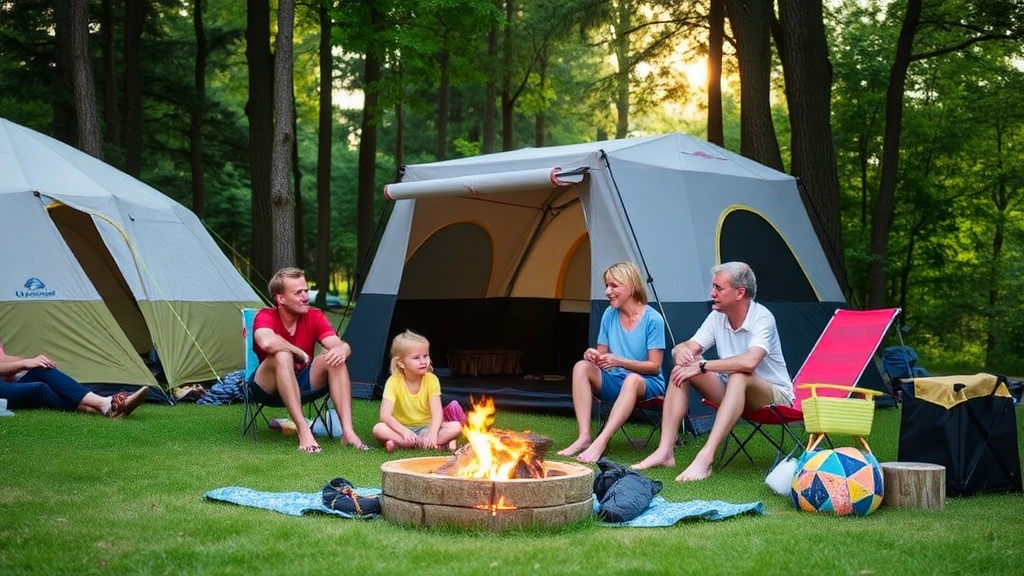Ready for the Ultimate Summer Family Camping Adventure?
Whether you’re a seasoned camper or a first-timer, this guide is your go-to resource for making your trip unforgettable. From identifying the best family-friendly camping destinations to ensuring you have all the essential gear, we’ve got you covered. Discover fun activities to keep the kids entertained, meal planning tips to make cooking a breeze, and crucial safety tips to keep everyone secure. Plus, we’ll explore budget-friendly options and sustainable practices to make your trip both affordable and eco-friendly.
Imagine Exploring Stunning Landscapes
Imagine exploring the stunning landscapes of Yellowstone, the serene lakes of the Lake District, or the majestic mountains of Banff. Picture your family gathered around a campfire, sharing stories and roasting marshmallows. With our comprehensive guide, you’ll learn how to prepare for your first family camping trip, the best times of year to go, and even how to find unique attractions at top camping spots.
Get Ready for an Adventure
So, pack your bags, grab your gear, and get ready for an adventure that will create lasting memories for the whole family. Summer family camping has never been this exciting!
Best Family-Friendly Camping Destinations
Alright, let’s dive in. So, you’re thinking about taking the family camping. Maybe you’re wondering, “Where can I find a spot that everyone will love?” Or, “What if the kids get bored?” Trust me, I’ve been there. Finding the perfect family-friendly camping destination can feel like hunting for a needle in a haystack. But don’t sweat it, I’ve got you covered.
Top Picks for Family-Friendly Camping
Yellowstone National Park, USA
Yellowstone is like the Disneyland of national parks. It’s got everythingâgeysers, waterfalls, and even bison roaming around. It’s a fantastic spot for families because:
- Educational Opportunities: Teach the kids about geology and wildlife.
- Kid-Friendly Trails: Easy hikes that even the little ones can manage.
- Amenities: Campgrounds with bathrooms and even some with showers.
Lake District, UK
The Lake District is a gem. Picture rolling hills, serene lakes, and quaint villages. It’s perfect for families who want a mix of adventure and relaxation.
- Water Activities: Canoeing, kayaking, and paddleboarding.
- Scenic Walks: Gentle trails with stunning views.
- Family-Friendly Campsites: Many with playgrounds and family facilities.
Banff National Park, Canada
Banff is like stepping into a postcard. The mountains, the lakes, the wildlifeâit’s all there. Ideal for families who love the great outdoors.
- Wildlife Watching: Spot elk, deer, and even bears.
- Hot Springs: Relax in natural hot springs after a day of exploring.
- Family Activities: Horseback riding, biking, and boat tours.
Hidden Gems You Shouldn’t Miss
New Forest, UK
This one’s a bit under the radar but totally worth it. Think ancient woodlands, wild ponies, and a sense of tranquility.
- Cycling Routes: Safe and easy paths for family bike rides.
- Wildlife: Spot ponies, deer, and a variety of birds.
- Family Campsites: Many with activities for kids, like treasure hunts and nature trails.
Acadia National Park, USA
Acadia offers a bit of everythingâmountains, ocean, and forests. It’s a playground for families who love variety.
- Tidepooling: Explore the tidal pools and discover marine life.
- Carriage Roads: Perfect for biking with the family.
- Ranger Programs: Educational activities designed for kids.
Quick Tips for Choosing a Family-Friendly Camping Spot
- Check Amenities: Make sure the campsite has bathrooms and showers.
- Look for Activities: Choose a spot with plenty of activities to keep the kids entertained.
- Consider Accessibility: Make sure the campsite is easily accessible, especially if you have young children.
- Safety First: Look for campsites with good safety records and clear guidelines.
Essential Camping Gear for Families
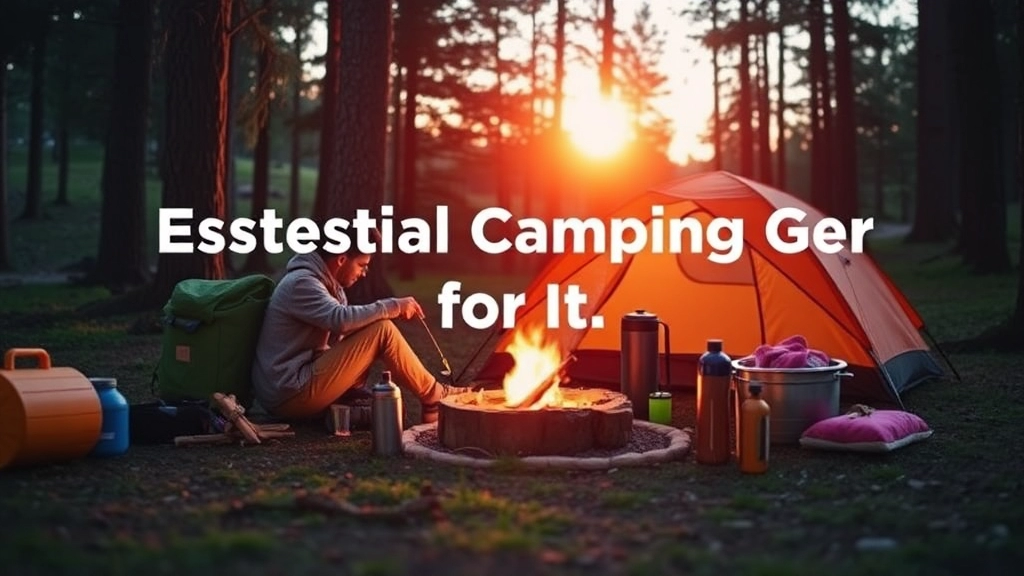
Ever been out in the wild with your family and realised you forgot something crucial? Yeah, we’ve all been there. Let’s make sure that doesn’t happen again.
Must-Have Camping Gear for Families
Tent
Start with a spacious tent. You need room to move, store stuff, and keep everyone comfy. Look for one that’s easy to set up and can withstand a bit of rough weather.
Sleeping Bags and Mats
Invest in quality sleeping bags. Trust me, you don’t want to be shivering at night. Pair them with sleeping mats or air mattresses for extra comfort.
Camping Stove and Cooking Gear
A camping stove is a game-changer. You’ll need pots, pans, and utensils too. Don’t forget a cooler to keep your food fresh.
First Aid Kit
Accidents happen. A well-stocked first aid kit is non-negotiable. Include bandages, antiseptic wipes, and any personal medications.
Lighting
Headlamps and lanterns are lifesavers. You don’t want to be fumbling in the dark. Extra batteries? Always.
Backpacks
Each family member should have a backpack for their essentials. It makes life easier when everyone carries their own weight.
Extra Gear for a Smooth Trip
Portable Chairs and Table
Sitting on the ground gets old fast. Portable chairs and a folding table make meals and downtime more comfortable.
Water Bottles and Filtration
Stay hydrated. Bring water bottles for everyone and a water filtration system if you’re camping far from clean water sources.
Weather-Appropriate Clothing
Layers, layers, layers. Pack weather-appropriate clothing. Think rain jackets, hats, and extra socks.
Entertainment
Bring games, books, and toys to keep the kids entertained. Trust me, it’s a lifesaver.
Real Stories, Real Gear
Last summer, we forgot our lanterns. Ended up using our phones for light. Not ideal. Now, we double-check our gear list every time.
Final Checklist
- Tent
- Sleeping Bags and Mats
- Camping Stove and Cooking Gear
- First Aid Kit
- Lighting
- Backpacks
- Portable Chairs and Table
- Water Bottles and Filtration
- Weather-Appropriate Clothing
- Entertainment
Fun Activities to Keep Kids Entertained
Alright, let’s talk about a biggie: keeping the kids entertained while camping. If you’re worried about the little ones getting bored and driving you bonkers, you’re not alone. We’ve all been there. But don’t sweat it; I’ve got some killer ideas to keep them busy and happy.
Nature Scavenger Hunt
Kids love a good hunt, and what better place than the great outdoors? Create a list of items for them to find, like:
- Pinecones
- Different types of leaves
- Rocks of various shapes
- Feathers
This not only keeps them busy but also teaches them about nature. It’s a win-win.
Campfire Stories and Songs
When the sun goes down, gather around the campfire. Share spooky stories, sing songs, or just chat about your day. Trust me, kids love the sense of adventure and camaraderie.
Outdoor Games
Keep it simple but fun. Think:
- Tag
- Hide and Seek
- Frisbee
- Ball games
These games burn off energy and are great for all ages.
Craft Time with Nature
Get creative with what’s around you. Use leaves, sticks, and stones to make art. You can even do some rock painting. It’s a fantastic way to let their imagination run wild.
Fishing
If you’re near a lake or river, fishing can be a great activity. It teaches patience and gives them a sense of accomplishment when they catch something. Don’t forget to bring kid-sized fishing gear.
Hiking Adventures
Take them on a short, manageable hike. Make it interesting by pointing out different plants, animals, and insects. You could even turn it into an educational experience.
Stargazing
Lay out a blanket and look up. Teach them about constellations or just enjoy the beauty of the night sky. It’s a calming way to end the day.
DIY Obstacle Course
Set up a simple obstacle course with what you have. Use ropes, sticks, and stones to create challenges. It’s perfect for burning off extra energy.
Water Fun
If you’re camping near a body of water, let them splash around. Swimming, skipping stones, or even just wading in the water can be incredibly entertaining.
Educational Activities
Bring along some nature books or guides. Turn your camping trip into a mini educational adventure. Teach them about the local flora and fauna.
Story Time with a Twist
Bring along some books but add a twist. Read stories that are related to camping or nature. It makes the experience more immersive.
Treasure Hunt
Hide small treasures around your campsite and give them a map. It’s like a scavenger hunt but with a pirate twist.
Board Games and Card Games
When all else fails, have some board games and card games on hand. They’re perfect for rainy days or when everyone needs a break from the sun.
For more tips on making your camping trip memorable, check out our ultimate guide to camp planning.
Meal Planning and Cooking Tips for Family Camping
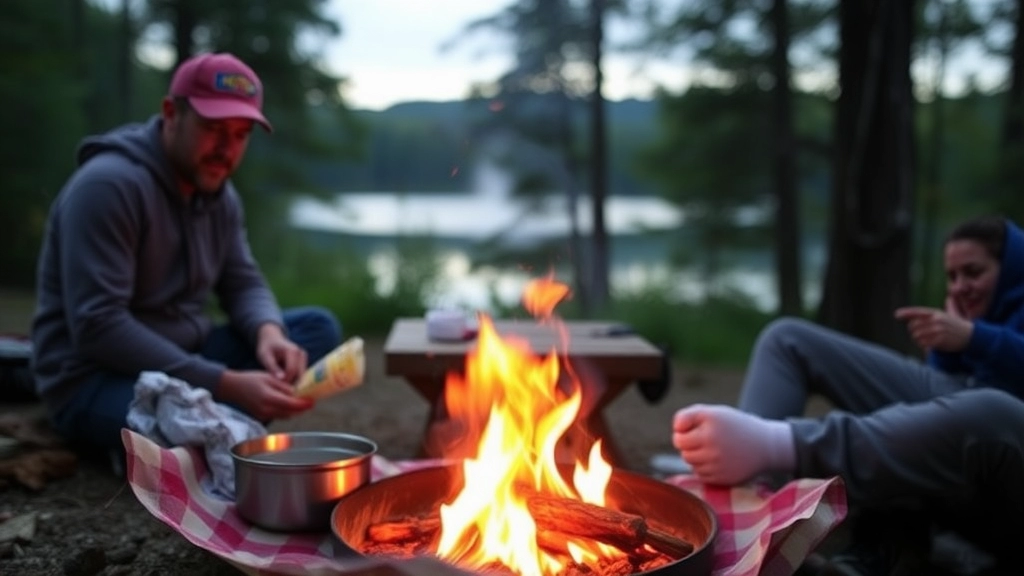
Ever found yourself stressing over what to cook on a camping trip?
Yeah, me too.
Meal planning for family camping can be a headache.
But it doesn’t have to be.
Here’s how to make it simple, fun, and stress-free.
Why Meal Planning Matters
First things first.
Why bother with meal planning?
- Saves time: No more last-minute scrambles.
- Saves money: Avoid overpriced camp store food.
- Keeps everyone happy: No hangry kids or adults.
Easy Meal Ideas for Camping
Let’s talk about some go-to meals that are easy to prep and cook.
Breakfast:
- Overnight oats: Prep at home, enjoy at camp.
- Pancakes: Use a pre-made mix, just add water.
Lunch:
- Wraps: Fill with deli meat, cheese, and veggies.
- Trail mix: Nuts, dried fruit, and a bit of chocolate.
Dinner:
- Foil packet meals: Toss in meat, veggies, and seasoning.
- One-pot pasta: Easy to cook, easy to clean.
Cooking Gear You’ll Need
Don’t overpack.
Stick to the essentials:
- Portable stove: A must-have for quick meals.
- Cast iron skillet: Durable and versatile.
- Cooler: Keeps perishables fresh.
- Reusable utensils: No need for disposable stuff.
Pro Tips for Cooking at Camp
Cooking at camp isn’t like cooking at home.
Here are some tips to make it easier:
- Prep at home: Chop veggies, marinate meat.
- Use zip-lock bags: Save space and keep things organised.
- Cook in batches: Make enough for leftovers.
- Bring spices: A little seasoning goes a long way.
Real-Life Example
Last summer, we went camping in the Lake District.
I prepped all the meals at home.
We had foil packet dinners every night.
Kids loved it.
No stress, no mess.
Keep It Safe
Safety first, always.
- Store food properly: Use a bear-proof container if needed.
- Dispose of waste: Leave no trace.
- Keep a first-aid kit: Just in case.
Ready to give it a go?
Happy camping!
Looking for more tips?
Check out our guide on Essential Camping Gear for Families.
And don’t miss our Safety Tips for Camping with Kids.
Simplify, plan ahead, and enjoy the adventure!
Safety Tips for Camping with Kids
Ever wondered how to keep your kids safe while camping? Let’s dive into some practical tips that can make your family camping trip both safe and enjoyable. Safety should be your top priority, especially when little ones are involved.
1. Choose a Family-Friendly Campsite
First things first, pick a campsite that’s known for being family-friendly. Look for places with amenities like clean bathrooms, running water, and designated play areas. These features can make a huge difference in keeping everyone safe and comfortable.
2. Pack a Comprehensive First Aid Kit
You never know when a scrape or bug bite will happen, so a well-stocked first aid kit is a must. Here’s what you should include:
- Bandages and gauze for cuts and scrapes
- Antiseptic wipes to clean wounds
- Tweezers for removing splinters
- Insect repellent to keep the bugs at bay
- Sunscreen to protect from harmful UV rays
3. Establish Camp Rules
Before you even set up the tent, lay down some ground rules. Make sure the kids understand:
- Stay within sight of an adult at all times
- No running around the campfire
- Don’t wander off into the woods alone
4. Fire Safety
Campfires are a staple of camping, but they can also be dangerous. Teach your kids about fire safety:
- Keep a safe distance from the fire
- Never leave the fire unattended
- Have a bucket of water or sand nearby to extinguish the fire quickly if needed
5. Hydration and Nutrition
Kids can get dehydrated quickly, especially when they’re active. Ensure they drink plenty of water and eat balanced meals. Carry snacks like fruits, nuts, and granola bars to keep their energy levels up.
6. Wildlife Awareness
Camping often means sharing the space with wildlife. Educate your kids on how to behave around animals:
- Never feed wild animals
- Store food securely to avoid attracting animals to your campsite
- Keep a safe distance from any wildlife you encounter
7. Weather Preparedness
Weather can be unpredictable. Always check the forecast before you go and pack accordingly. Bring:
- Rain gear for unexpected showers
- Warm clothes for cooler nights
- Sun hats and sunglasses for sunny days
8. Emergency Plan
Have a clear emergency plan in place. Make sure everyone knows:
- The location of the nearest hospital
- Emergency contact numbers
- The meeting point if someone gets lost
9. Teach Basic Survival Skills
Equip your kids with basic survival skills. Show them how to:
- Navigate using a map and compass
- Signal for help using a whistle
- Identify safe drinking water
10. Stay Connected
While you might want to disconnect, keep a mobile phone or a walkie-talkie handy for emergencies. Ensure it’s fully charged and has a backup power source.
Budget-Friendly Camping Options
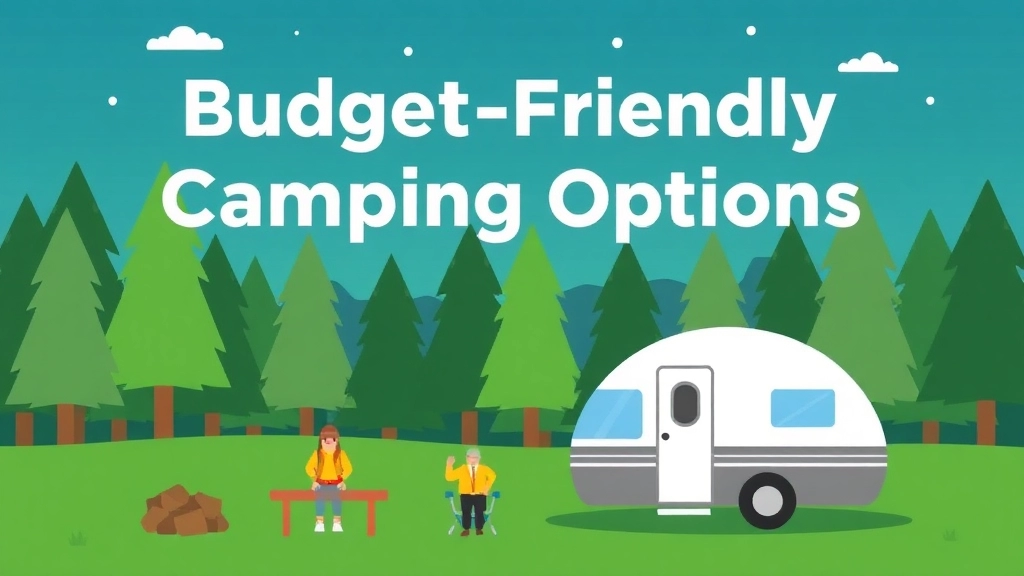
Ever feel like family trips are burning a hole in your pocket?
Camping doesn’t have to be one of them.
Let’s dive into some budget-friendly camping options that will keep your wallet happy and your family smiling.
Why Consider Budget-Friendly Camping?
Why?
Because saving money while creating memories sounds like a win-win, right?
Free and Low-Cost Campsites
Look for free campsites.
Yes, they exist.
- National forests often have free dispersed camping.
- Bureau of Land Management (BLM) lands in the US offer no-cost camping spots.
- State parks sometimes have low-cost options, especially if you’re a resident.
Off-Peak Seasons
Camping in the off-peak seasons can save you a bundle.
- Spring and autumn are great for avoiding high fees and crowds.
- Midweek stays can also be cheaper than weekends.
Gear on a Budget
You don’t need to buy the latest gear.
- Borrow from friends or family.
- Rent equipment if you’re trying it out for the first time.
- Second-hand shops and online marketplaces often have great deals.
Meal Planning
Prepping meals ahead can save both time and money.
- Plan simple meals that don’t require fancy ingredients.
- Bring non-perishables to avoid waste and save on ice packs.
- Cook in bulk and use leftovers for the next day.
Affordable Activities
You don’t need to spend a lot to keep the kids entertained.
- Nature scavenger hunts are free and fun.
- Storytelling around the campfire is a classic and costs nothing.
- DIY crafts with things you find around the campsite.
Look for Deals and Discounts
Always be on the lookout for deals.
- Membership discounts like those from camping clubs.
- Coupons and promo codes for campsites and gear.
- Local tourism websites often list free or low-cost activities.
Real-Life Example
Last summer, we camped in a national forest for free.
Borrowed a tent from a mate.
Cooked all our meals on a portable stove we got second-hand.
Kids spent hours exploring and playing games we made up on the spot.
Total cost? Less than a night out at a restaurant.
Budget-friendly camping is totally doable.
And it’s just as fun, if not more, because you’re getting creative and resourceful.
So, get out there and make some memories without breaking the bank.
How to Prepare for Your First Family Camping Trip
Feeling Overwhelmed by Your First Family Camping Trip?
I get it. The thought of packing up the family and heading into the great outdoors can be daunting. What if you forget something important? What if the kids get bored? What if it rains? These are all valid concerns, but trust me, with a bit of prep, your first family camping trip can be a smashing success.
Start with the Right Gear
Let’s kick things off with the essentials. You don’t need to break the bank, but there are a few items you simply can’t do without:
- Tent: Make sure it’s big enough for the whole family. Look for one that’s easy to set up and has good ventilation.
- Sleeping Bags: Get ones that are appropriate for the season. Summer bags for summer, winter bags for winter. Simple.
- Cooking Equipment: A portable stove, pots, and pans are a must. Don’t forget a lighter or matches.
- First Aid Kit: Kids are accident-prone. Be prepared for cuts, scrapes, and bug bites.
Plan Your Meals Ahead of Time
Meal planning can make or break your camping experience. Keep it simple but tasty:
- Breakfast: Think oatmeal, pancakes, or breakfast burritos.
- Lunch: Sandwiches, wraps, or pasta salad.
- Dinner: Grilled meats, veggies, or one-pot meals like chili or stew.
- Snacks: Nuts, fruit, and granola bars.
Prepping some of these meals at home can save you loads of time and hassle at the campsite.
Keep the Kids Entertained
Bored kids can turn a fun trip into a nightmare. Plan activities to keep them busy:
- Nature Scavenger Hunt: Make a list of items for them to find.
- Fishing: If you’re near a lake or river, this can be a great way to pass the time.
- Campfire Stories and Songs: A classic for a reason.
- Board Games and Cards: Great for rainy days or evenings.
Safety First
Safety should always be a top priority. Here are some key tips:
- Teach Kids Basic Safety: Explain the importance of staying within the campsite and not wandering off.
- Fire Safety: Make sure they know the rules around the campfire.
- Bug Protection: Use insect repellent and check for ticks daily.
- Weather Prep: Always have a plan for bad weather. Know where the nearest shelter is.
Budget-Friendly Tips
Camping doesn’t have to cost a fortune. Here are some ways to save:
- Borrow Gear: If you’re new to camping, see if you can borrow gear from friends or family.
- Choose Nearby Locations: Save on travel costs by camping close to home.
- Off-Season Camping: Campsites are often cheaper outside of peak season.
Best Times of Year for Family Camping
Timing can make a huge difference. Generally, late spring and early autumn are ideal. The weather is usually mild, and the crowds are smaller. Summer can be great too, but be prepared for the heat and busier campsites.
Sustainable Camping Practices
Teaching kids about sustainability is crucial. Here are some easy practices:
- Leave No Trace: Pack out all your rubbish.
- Use Reusable Items: Plates, cups, and utensils.
- Respect Wildlife: Observe animals from a distance and never feed them.
Best Times of Year for Family Camping
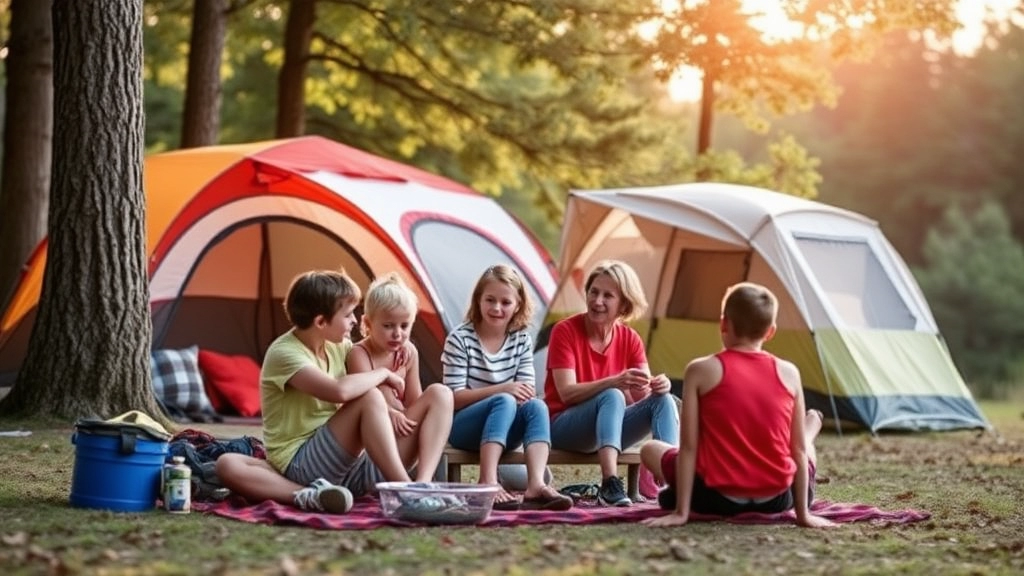
When’s the best time to take the family camping?
You’ve probably asked yourself this a dozen times.
Let’s break it down.
Spring Camping:
- Pros:
- Nature in full bloom.
- Mild temperatures.
- Fewer bugs.
- Cons:
- Unpredictable weather.
- Wet grounds.
Summer Camping:
- Pros:
- Long days.
- Warm nights.
- More activities available.
- Cons:
- Crowded campsites.
- Higher temperatures.
Autumn Camping:
- Pros:
- Stunning foliage.
- Cooler temperatures.
- Less crowded.
- Cons:
- Shorter days.
- Cooler nights.
Winter Camping:
- Pros:
- Quiet and serene.
- Unique experience.
- Cons:
- Cold weather.
- Limited activities.
When Do We Go?
Spring and Autumn are often the best times for family camping.
Why?
- Comfortable weather.
- Fewer people.
- Beautiful scenery.
Real Talk:
One spring, we took the kids camping in the Lake District.
Everything was blooming.
The kids loved it.
But, it rained.
A lot.
We learned to pack extra tarps and waterproof gear.
Quick Tips:
- Check the weather forecast.
- Pack layers.
- Bring extra blankets and tarps.
Internal Links:
Top Family Camping Spots with Unique Attractions
Ever wondered where to take the family for a camping trip that’s more than just tents and trees? I’ve got you covered. Finding the perfect family-friendly camping spot can be a game-changer. You want a place that offers more than just a campsite â think unique attractions and activities that keep everyone entertained. Let’s dive in!
Yellowstone National Park, USA
Yellowstone isn’t just a park; it’s an adventure playground. From geysers to hot springs, the whole family can explore natural wonders that you won’t find anywhere else.
- Must-see spots: Old Faithful, Grand Prismatic Spring, and Yellowstone Lake.
- Activities: Hiking, wildlife spotting, and educational ranger programs.
- Tip: Book early – this place fills up fast!
Lake District, UK
The Lake District is where you can mix camping with a bit of culture. Not only are the landscapes stunning, but you’ve also got literary history at your fingertips.
- Must-see spots: Lake Windermere, Beatrix Potter’s Hill Top, and Scafell Pike.
- Activities: Boating, hiking, and visiting quaint villages.
- Tip: Check out local festivals for a unique experience.
Banff National Park, Canada
Banff is like stepping into a postcard. Imagine camping with views of turquoise lakes and towering mountains.
- Must-see spots: Lake Louise, Moraine Lake, and the Banff Hot Springs.
- Activities: Canoeing, hiking, and gondola rides.
- Tip: Bring a camera â the photo ops here are endless.
Blue Mountains, Australia
If your family loves adventure, the Blue Mountains are a must-visit. With its rugged cliffs and eucalyptus forests, it’s a playground for outdoor enthusiasts.
- Must-see spots: Three Sisters, Jenolan Caves, and Scenic World.
- Activities: Rock climbing, caving, and scenic railway rides.
- Tip: Visit the local wildlife parks to meet kangaroos and koalas.
Plitvice Lakes National Park, Croatia
This place is straight out of a fairy tale. The cascading lakes and waterfalls are something the kids will remember forever.
- Must-see spots: Veliki Slap, the largest waterfall, and the series of interconnected lakes.
- Activities: Hiking, boat rides, and exploring waterfalls.
- Tip: Wear comfortable shoes â there’s a lot to explore on foot.
Kruger National Park, South Africa
Want to mix camping with a safari? Kruger National Park is your go-to. Imagine waking up to the sounds of wildlife right outside your tent.
- Must-see spots: Big Five game viewing areas (lion, leopard, rhinoceros, elephant, and Cape buffalo).
- Activities: Guided safari tours, bird watching, and bush walks.
- Tip: Opt for a guided tour to get the most out of your experience.
Fiordland National Park, New Zealand
For families who crave dramatic landscapes, Fiordland is a dream come true. Think fjords, rainforests, and rugged mountains.
- Must-see spots: Milford Sound, Doubtful Sound, and the Kepler Track.
- Activities: Kayaking, hiking, and boat tours.
- Tip: Weather can be unpredictable â pack for all conditions.
Before heading out on your next camping adventure, make sure to check out our summer camping checklist for all the essential gear and tips. And if you’re looking for more inspiration, explore our top summer camp field trip ideas to make your trip even more memorable!
Sustainable Camping Practices for Families
Ever wondered how to make your family camping trips eco-friendly without turning it into a hassle?
You’re not alone.
Sustainable camping can seem like a tall order, but it doesn’t have to be.
Let’s break it down.
Why Bother with Sustainable Camping?
We all love nature.
But if we don’t take care of it, our favourite camping spots won’t be around for long.
Plus, teaching kids about sustainability is priceless.
Start with Your Gear
First off, use what you have.
No need to buy new gear every time.
If you must buy, go for second-hand or eco-friendly brands.
Pack Smart
- Reusable water bottles: No more plastic waste.
- Biodegradable soap: Keeps those streams clean.
- Solar-powered chargers: Ditch the batteries.
Leave No Trace
This one’s huge.
- Carry out all rubbish: Yes, even the tiny bits.
- Stick to trails: Protects the flora and fauna.
- Campfires: Use a portable stove or established fire rings.
Water Conservation
- Short showers: If you have to shower, keep it brief.
- Use a basin: For washing dishes, instead of running water.
Eco-Friendly Activities
- Hiking: Low impact and great exercise.
- Bird watching: Teaches kids about local wildlife.
- Nature crafts: Use fallen leaves and twigs, not live plants.
Food Choices
- Local produce: Supports local farmers and reduces carbon footprint.
- Minimal packaging: Less waste to carry out.
Involve the Kids
Kids love being part of the action.
- Give them tasks: Like sorting recyclables.
- Explain why: Make it a learning experience.
Real Stories
Last summer, we tried a zero-waste camping trip.
We packed all our food in reusable containers and brought back all our rubbish.
It was eye-opening and surprisingly easy.
Sustainable camping isn’t just a trend.
It’s a responsibility.
And it’s easier than you think.
So next time you’re packing for a trip, remember these tips.
Your kidsâand the planetâwill thank you.
For more ideas on eco-friendly activities, check out our summer camp science activities and healthy summer camp snacks that kids will love.
FAQs for Summer Family Camping
What are the essential camping gear items for families?
Essential camping gear includes a spacious tent, quality sleeping bags and mats, a camping stove and cooking gear, a first aid kit, proper lighting like headlamps and lanterns, and backpacks for each family member.
What extra gear should I bring for a smooth camping trip?
Consider bringing portable chairs and a table, water bottles and a filtration system, weather-appropriate clothing, and items for entertainment like games, books, and toys.
Why is meal planning important for family camping?
Meal planning saves time, money, and keeps everyone happy by avoiding last-minute scrambles and overpriced camp store food.
What are some easy meal ideas for camping?
For breakfast, try overnight oats or pancakes. Lunch could be wraps or trail mix. For dinner, consider foil packet meals or one-pot pasta.
How can I make camping more budget-friendly?
Look for free or low-cost campsites, camp during off-peak seasons, and consider borrowing or renting gear. Prepping meals ahead and engaging in affordable activities like nature scavenger hunts can also help save money.
When is the best time of year for family camping?
Spring and autumn are often ideal due to comfortable weather, fewer crowds, and beautiful scenery. However, each season has its pros and cons, so choose based on your family’s preferences and preparedness.
What should I keep in mind for safety while camping?
Ensure you store food properly, dispose of waste responsibly, and always keep a first-aid kit on hand. These steps help ensure a safe and enjoyable camping experience.
How can I keep kids entertained during a camping trip?
Bring along games, books, and toys. Activities like nature scavenger hunts, storytelling around the campfire, and DIY crafts with found objects can keep kids engaged and happy.
References
-
Family Camping Checklist by REI
-
Family Camping Tips by Backpacker
-
Family Camping 101: Tips, Tricks, and Gear Guide by Outdoor Project

